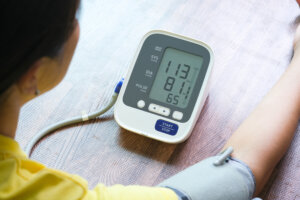Blood Pressure Uncuffed™ Volume 7: What Does Calibrating My Blood Pressure Monitor Mean?
March 13th, 2024. By Sophie Cook
Do you calibrate your at home blood pressure monitor according to its instructions? Do you even know what calibration means, or how to calibrate your device? Most blood pressure monitors need regular calibration, yet many people overlook the necessity of it and continue to use their device without proper calibration. Keeping up with the maintenance of your device by annually calibrating it is essential to ensure accurate, precise, and reliable readings.
Many people monitor their BP at home to help detect and manage hypertension, but this can only be done if you are getting accurate readings. Not only does regular monitoring help detect hypertension, but it can also assess your cardiovascular health, guide treatment options, and monitor the effectiveness of medications you may be taking. Although at home devices are convenient, they come with a risk of accuracy and calibration needs (2). The method of self-monitoring has become increasingly prevalent in healthcare, so it’s of the upmost importance these measures are reliable for your health and safety.

What is calibration?
Technically, calibration is “the process of comparing a reading on one instrument, with another instrument that has been calibrated and referenced to a known set of parameters” (1). It’s essentially a device inspection to ensure everything is working properly and according to the set standards. Blood pressure devices should begin at zero, so calibrating or re-calibrating ensures that the device is performing accurately. In simple terms, calibrating your blood pressure device is just a process of verifying and/or adjusting the device against the set standard.
If your device is out of calibration, any discrepancies could potentially lead to misdiagnosis or the mismanagement of hypertension (2). The environment it’s used and stored in, general wear and tear, and mishandling of the device will degrade the device’s accuracy over time, which is why it’s important to get your device calibrated as intended.
Why should I calibrate my device?
Calibrating your blood pressure monitoring is extremely important in order to get accurate, precise, and reliable measures. Here are some of the reasons why calibration is crucial to at home BPM (1,2,3).
- Checks accuracy
- Gives you knowledge of how your device measures (high, low, normal)
- Reliability of accurate measures
- Improves confidence in your results
- Improves quality of the device
- Minimizes errors
- Ensures device precision and integrity
- Maintains compliance with health standards
When should I calibrate my device?
Every device has different guidelines. For best practice we recommend you check with the device manufacturer or look in the manual provided with the device. Typically, monitors should be calibrated yearly for best results. Depending on the device, you may be able to take it to your doctor and have them ensure it is functioning properly (although this is NOT considered calibration).
Besides regular calibration, there are some instances where you may want to seek re-calibration. If where the monitor is being used experiences any extreme environmental changes such as temperature or humidity fluctuations, you should consider re-calibrating as those environmental factors can affect accuracy (2). If you consistently see results that are wildly out of your expected range, it could be an indicator your device is out of calibration (2).
The bottom line is even if your monitor is performing as expected, you should keep up with its calibration maintenance to ensure accurate and reliable measures.
Are there calibration-free blood pressure devices?
The majority of wearable blood pressure monitors out there have inflatable cuffs that are required to be used in order to calibrate and use the wearable device (which seems to defeat the purpose). Some of the wearable monitors need calibration every couple of weeks, which is not convenient for those with busy schedules and a dislike for the cuff. Even with monthly calibration using the traditional inflatable cuff to pair with the wearable monitor, some users say they still can’t rely on accurate readings (4).
Valencell is currently developing a truly calibration-free and cuffless Fingertip™ Blood Pressure Monitor* to help make blood pressure measures you can trust hassle free.
*Not FDA Cleared. Not for sale in the US.
Sources: